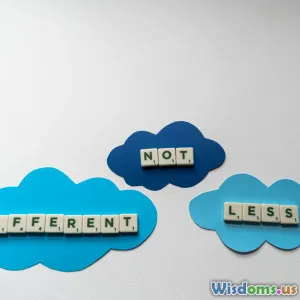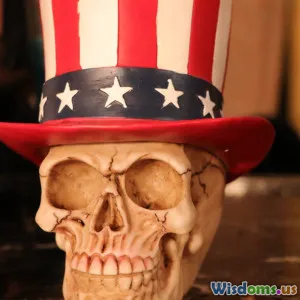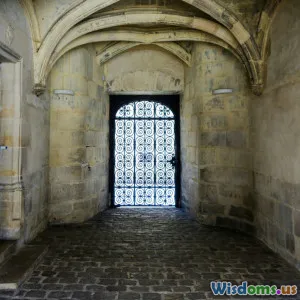
Rosicrucianism Versus Freemasonry Major Ideological Differences
9 min read Explore the profound ideological differences between Rosicrucianism and Freemasonry, two influential esoteric traditions shaping spirituality and philosophy. (0 Reviews)
Rosicrucianism Versus Freemasonry: Major Ideological Differences
Introduction
In the shadowy yet intriguing realm of Western esotericism, two names often stand out: Rosicrucianism and Freemasonry. Both have fascinated scholars, mystics, and curious minds alike for centuries. While the two are sometimes conflated due to overlapping symbols and membership, they represent fundamentally different ideologies, histories, and mystical pursuits. By examining the major ideological differences between Rosicrucianism and Freemasonry, we gain unprecedented insight into how each tradition shapes the quest for spiritual understanding and transformation in distinct ways.
Historical Foundations and Origins
Rosicrucianism: An Allegorical Renaissance Mystery
Rosicrucianism emerged publicly in the early 17th century with the publication of manifestos like the Fama Fraternitatis (1614) and the Confessio Fraternitatis (1615). These texts described the existence of a secret brotherhood, the Rosicrucians, who combined mysticism, alchemy, and hermetic philosophy with a goal to reform science, religion, and society. The movement is allegorical, heavily symbolic, and often considered a spiritual rather than institutional organization.
Unlike Freemasonry, which has verifiable lodge origins, Rosicrucianism’s origins are more shrouded in myth and symbolic narrative. It encapsulates the Renaissance spirit, mixing esoteric Christian thought with pagan hermetic traditions and emphasizing hidden wisdom, personal spiritual transformation, and the unity of man with the cosmos.
Freemasonry: Craft Guild to Fraternal Brotherhood
Freemasonry traces its origins to medieval stonemasons’ guilds but emerged as a speculative fraternity in the early 18th century, formalized with the creation of the Grand Lodge of England in 1717. Unlike Rosicrucianism, Freemasonry is a formal organization with lodges worldwide, emphasizing moral philosophy, brotherhood, and self-improvement through allegory and ritual.
Freemasonry’s roots are practical and social, with its rituals derived from architectural symbolism related to building cathedrals and temples. Ethical living, charity, and the pursuit of enlightenment through reason and symbolism frame its core mission.
Core Ideological Differences
Spiritual Goals and Philosophical Outlook
Rosicrucianism:
- Central to Rosicrucian ideology is esoteric spiritual enlightenment that unites science, religion, and mysticism. It aims at inner alchemical transformation—often described metaphorically as turning the self into spiritual gold.
- The path involves mystical study of alchemy, Kabbalah, and hermeticism, seeking secret knowledge (gnosis) that transcends traditional religious dogma.
- Rosicrucians emphasize universal wisdom and the idea that individuals can access divine truth directly.
Freemasonry:
- Freemasonry focuses primarily on ethical self-improvement and social brotherhood. While spiritual, it is not dogmatic or explicitly mystical; rather, it encourages members to seek truth within their own faith traditions.
- It promotes Enlightenment values—reason, liberty, and fraternity—and uses the allegory of architecture to symbolize building one’s moral character.
- Its spiritual aspect is universalist but more symbolic and less esoterically concealed compared to Rosicrucianism.
Symbolism and Rituals
Rosicrucian Symbols:
- The Rose Cross (a cross with a blooming rose at its center) represents unfolding spiritual consciousness.
- Alchemical symbols feature prominently, including the philosopher’s stone and the ouroboros, signifying eternal cyclicality.
- Rituals are often private, meditative, and focused on mystical knowledge rather than group ceremony.
Freemasonry Symbols:
- The Square and Compasses are iconic, representing morality (square) and the boundaries of knowledge or behavior (compasses).
- Other symbols include the all-seeing eye (Divine watchfulness), the Great Architect of the Universe (a non-denominational name for God), and the pillars Boaz and Jachin.
- Rituals are performed in lodges, involving initiations designed to impart moral lessons through dramatic allegory.
Attitudes Toward Religion and Mysticism
Rosicrucianism:
- Generally aligns with esoteric Christianity but incorporates Kabbalah, Hermeticism, and Eastern philosophy.
- Openly embraces mysticism and metaphysics, positing that inner illumination and transcendence are achieved through hidden knowledge.
- Often positions itself as a spiritual reform movement critiquing established religious institutions for dogmatism.
Freemasonry:
- Officially requires belief in a Supreme Being but remains non-sectarian and agnostic on theological detail.
- Avoids endorsing specific mystical or religious doctrines to unite diverse religious members (Christian, Jewish, Muslim, etc.).
- Ritual focuses on morality and ethics rather than overt theosophical teachings.
Organizational Structure and Membership
Rosicrucianism:
- No single unified organization; multiple groups claim Rosicrucian heritage (e.g., AMORC, Lectorium Rosicrucianum), often independent in governance.
- Membership may require study and initiation but varies widely; more secretive, less standardized.
- Emphasizes personal spiritual journey over organizational hierarchy.
Freemasonry:
- Highly structured lodges regulated by Grand Lodges; strict degrees of initiation (Entered Apprentice, Fellowcraft, Master Mason).
- Membership requires belief in a Supreme Being, generally male-only, with established rituals and community service.
- Strong social and philanthropic engagement alongside symbolic teaching.
Real-World Influence and Legacy
Rosicrucianism in Modern Culture
Rosicrucian ideas have inspired modern occultism, new age spirituality, and alternative medicine. Figures like John Dee and later Hermeticists drew upon its themes. The Hermetic Order of the Golden Dawn, which influenced modern Western magic, incorporated Rosicrucian elements heavily.
Today, Rosicrucian symbolism and philosophy promote holistic healing, esoteric education, and the blending of science with spirituality. The Rosicrucian Order AMORC, for example, is one of the largest contemporary groups advocating mystical study combined with practical wisdom.
Freemasonry's Social and Cultural Role
Freemasonry has had a profound impact on social structures, contributing leaders in politics, art, and science. Its principles of fraternity and ethical living helped foster Enlightenment ideals with lasting democracy and civil rights influence.
Famous Freemasons like George Washington, Wolfgang Amadeus Mozart, and Benjamin Franklin exemplify its broad cultural imprint. Freemasonry lodges often serve communities through charitable works and ethics-based education.
Conclusion
While Rosicrucianism and Freemasonry share a fascination for symbolism, secret knowledge, and personal transformation, their ideological cores diverge significantly. Rosicrucianism channels mystical esotericism and spiritual alchemy aiming at cosmic unity and hidden wisdom. In contrast, Freemasonry focuses on moral development, fraternal bonds, and Enlightenment principles accessible through universal symbolism.
Understanding these differences enriches one’s perspective on Western spiritual traditions and their diverse approaches to humanity’s deepest questions. Appreciating how each tradition interprets the search for truth—not as competition but complementary paths—can inspire a more nuanced exploration of personal and collective enlightenment.
By examining Rosicrucianism and Freemasonry side by side, we are reminded that esoteric traditions, while often veiled in mystery, are ultimately reflections of humanity’s enduring quest for meaning, ethics, and spiritual growth.
For further reading, explore primary texts such as the Rosicrucian manifestos and Masonic ritual literature, and consider the contemporary organizations that carry forward these ancient traditions.
Rate the Post
User Reviews
Popular Posts




















